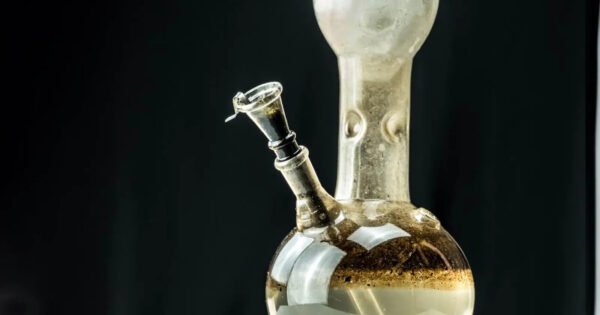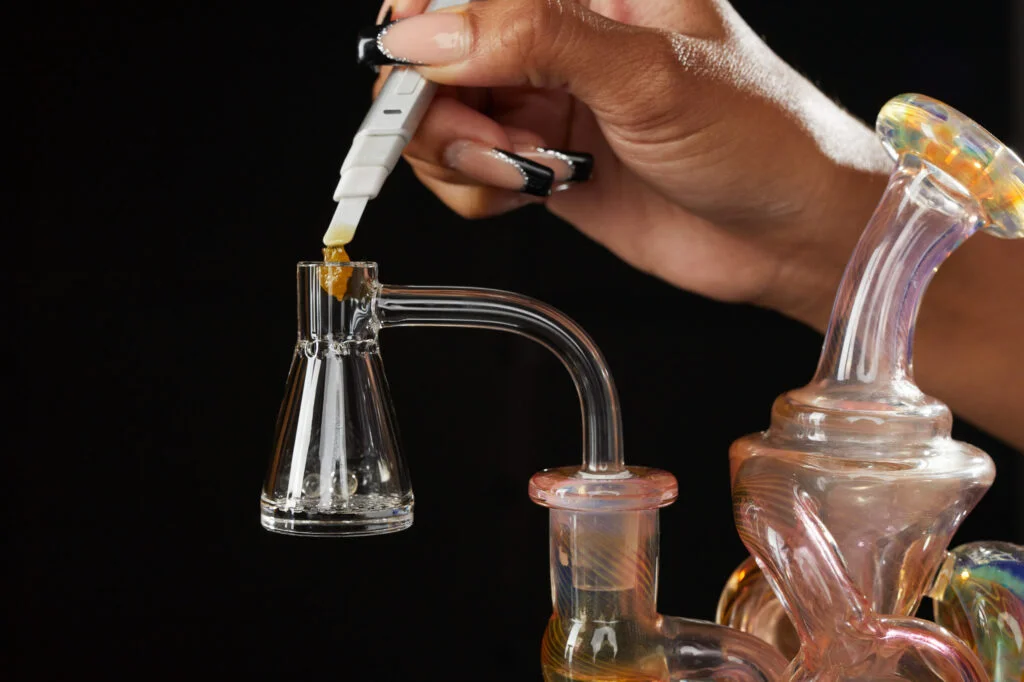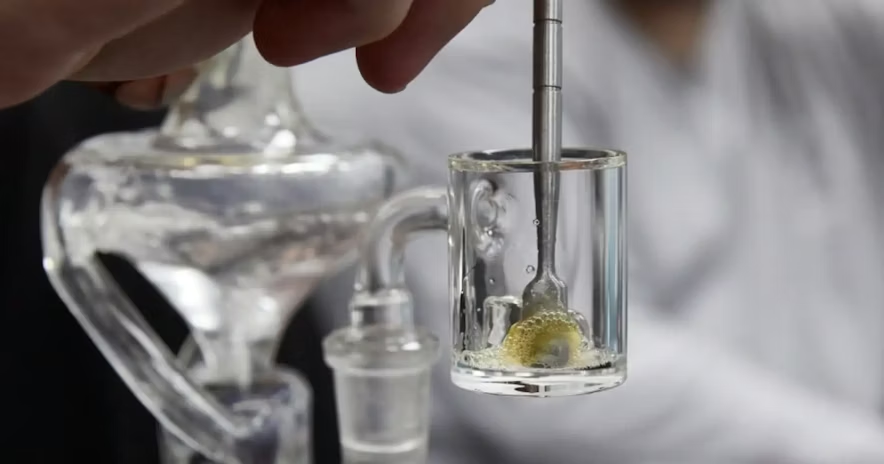Tired of cloudy glass and harsh hits? The gunk in your water pipe is more than ugly—it steals flavor and can shelter mold. Stick with me and I’ll show you the fast, fuss-free way to bring that glass back to showroom shine.
Need the answer in one gulp?
Clean your glass water pipe with coarse salt and 91 % isopropyl alcohol, shaking for 30 seconds, then rinse warm, air-dry, and replace the water. This combo strips resin, kills germs, and preserves flavor without professional tools.
A spotless pipe is minutes away. Let’s dive in.
Why does resin build up inside a glass water pipe?
Sticky concentrates and plant oils cling to the pipe’s walls as smoke cools, leaving a thin tar-like film that grows thicker with every session.
Quick answer:
Warm smoke condenses on cool glass, trapping ash, tar, and moisture. Left unchecked, it turns into a stubborn resin layer that dulls taste and harbors microbes. University of Washington research shows this film can form after just a few bowls.

Dive deeper
The chemistry of residue
When cannabis burns, volatile compounds cool rapidly against the pipe, depositing polycyclic aromatic hydrocarbons (PAHs) and plant waxes. According to a study by the National Institute on Drug Abuse these residues can contain dozens of cannabinoids plus tar-like by-products.
Hidden health risks
A glass coated in biofilm can support mold spores such as Aspergillus fumigatus – a concern highlighted by the Centers for Disease Control for immuno-compromised users. The risk climbs when water turns cloudy and is left standing.
| Build-up age | Taste impact | Cleaning difficulty |
|---|---|---|
| 1 day | Slightly muted | Low |
| 1 week | Harsh, bitter | Medium |
| 1 month+ | Acrid, cough-inducing | High |
What supplies do I need to clean a glass pipe?
You don’t need fancy gear—just ingredients hiding in most supply closets.
Quick answer:
Grab 91 % (or higher) isopropyl alcohol, coarse kosher salt, a zip-top bag or bucket, cotton swabs, and warm water. Optional: rubber stoppers and a soft pipe brush for awkward corners. Occupational Safety & Health Administrationisopropyl guidelines confirm these items are safe when handled with ventilation.

Dive deeper
Why 91 % alcohol beats 70 %
Higher alcohol content dissolves resin faster. A 2024 paper from Colorado State University found 91 % ISO removed 30 % more tar in the first minute compared with 70 %.
Salt ≈ gentle sandpaper
Coarse grains scour grime without scratching borosilicate glass, creating micro-turbulence that speeds up dissolution.
Eco alternatives
If ISO is unavailable, white vinegar plus baking soda works—though it requires soaking overnight. Vinegar’s acetic acid (pH 2.5) loosens resin; baking soda’s fizz lifts particles. See detailed ratios on the EPA’s Safer Choice list.
| Supply | Why it works | Swap-in option |
|---|---|---|
| 91 % ISO | Dissolves oils | 95 % grain alcohol |
| Coarse salt | Abrasive boost | Rice or rock salt |
| Zip-bag | Shake chamber | Plastic food tub |
How do I clean my glass water pipe step-by-step?
Here’s the five-minute routine I rely on every Friday.
Quick answer:
Empty water ➜ fill chambers with salt ➜ add ISO ➜ plug openings ➜ shake 30 s ➜ rinse warm ➜ air-dry. Perform weekly for daily users, monthly for occasional use.

Dive deeper
Step 1 – Pre-flush
Rinse with warm tap water to dislodge loose ash.
Step 2 – Salt & ISO dance
Add two tablespoons of coarse salt. Pour ISO until chambers are half-full. Cover joints with rubber stoppers or your thumbs.
Step 3 – Shake like maracas
Thirty seconds of vigorous shaking is plenty. ISO darkens to coffee-brown as resin releases. For stubborn spots, soak 10 minutes.
Step 4 – Detail work
Use cotton swabs dipped in ISO to polish down-stems and percs. A soft nylon brush helps curved recyclers—avoid metal brushes that can etch glass, warns the American Scientific Glassblowers Society.
Step 5 – Rinse & dry
Flush with warm water until the scent of alcohol disappears. Place upside-down on a lint-free towel; heat-shock can crack glass, so skip boiling water or dishwashers.
| Frequency | Heavy users | Casual users |
|---|---|---|
| Quick rinse | After each session | Every 2–3 sessions |
| Full ISO clean | Weekly | Monthly |
What mistakes should beginners avoid?
Most breakages and bad smells come from three simple slip-ups.
Quick answer:
Avoid boiling glass, using harsh metal tools, or skipping fresh water. High heat stresses percs, steel scrapes leave scratches, and stale water breeds bacteria.
Dive deeper
Boiling blunder
Borosilicate tolerates heat, but rapid temperature swings create micro-fractures.
Metal scraper syndrome
Knives gouge walls and trap even more tar next time. Stick to plastic or wooden picks.
“I’ll change the water tomorrow” myth
Standing water becomes a petri dish in 24 hours. A 2023 analysis by Johns Hopkins Bloomberg School of Public Health detected bacterial counts exceeding safe drinking levels after just two days in uncleaned bongs.
| Mistake | Consequence | Safer swap |
|---|---|---|
| Boiling | Cracked glass | Warm rinse |
| Metal tools | Scratched surface | Nylon brush |
| Old water | Mold growth | Daily refresh |
How often should I clean my glass pipe?
Cleaning cadence depends on how—and what—you smoke.
Quick answer:
Daily flower users should deep-clean weekly; concentrate or occasional users can stretch to monthly. Swap water after every session to protect flavor and lung health, recommends Leafly’s 2024 consumer report.
Dive deeper
Factors influencing schedule
- Residue type: Oils from rosin cling harder than flower ash.
- Perc complexity: More percs = more nooks = faster buildup.
- Water quality: Hard water leaves mineral rings—use filtered if possible.
Calendar tricks
Set a phone reminder titled “Glass Spa Day.” Pair cleaning with trash-night so it becomes routine.
Conclusion
Crystal-clear glass rewards you with smoother hits, fresher taste, and longer pipe life—just five minutes of care each week keeps the good vibes flowing.
Still unsure which cleaner to grab? Email me at sales@cloverpipe.com or browse our pro-grade brushes here 👉 www.cloverglasspipe.com






